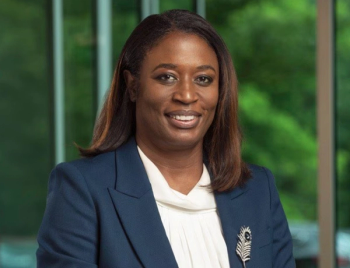
Nurses, Hospital Systems Stretched Thin Amid Ongoing National Nursing Shortage
Pandemic fuels burnout, stress, and thoughts of leaving the workforce.
Healthcare systems and nursing workforces across the United States are already suffering the effects of a nursing shortage, but data suggest the worst is yet to come.
As the baby boomer generation ages and their healthcare needs grow, and nursing colleges struggle to meet demand, both current and projected nursing shortages will only intensify. A projection reported in the
As reported in a
Low nursing school enrollment rates–due to a lack of nursing school faculty–may fail to replace the ranks of retiring nurses, leaving healthcare systems with staffing shortfalls. The American Association of Colleges of Nursing’s report on
“The number of nurses leaving the workforce each year has been growing steadily from around 40,000 in 2010 to nearly 80,000 by 2020. Meanwhile, the dramatic growth in nursing school enrollment over the last 15 years has begun to level off,” said healthcare economist David Auerbach in a 2015 report published by
An aging population and growing demand for healthcare services will only exacerbate the current nursing shortage. According to a 2017 report by the
As older nurses retire and younger nurses trickle in from baccalaureate and graduate nursing programs, whether the workforce will be able to meet the increased demands of healthcare is questionable.
The lack of staffing is already having substantial impacts on nurses across the country, as they experience more stress and burnout, report lower rates of job satisfaction, and consider leaving the profession. Nurses are stretched thin, proven by data reported by
Amid the COVID-19 pandemic and recent surge in cases driven by the delta variant, nurses in Florida are being hit hard by staff shortages, where they have the
Many organizations are offering enormous pay raises to nurses to stay afloat during shortages, some upwards of $70 per hour.
“Because there’s been a demand for nurses, we’re all getting offers from agencies from around the country, from different hospitals in South Florida and throughout Florida with offers for double, sometimes triple your salary,” Betsy Marville, nurse organizer with the 1199 SEIU United Healthcare Workers East in Florida,
This can result in a mismatch between the number of available nurses and where they are most needed as the pandemic enters a dangerous new phase. In Mississippi, which has one of the nation’s lowest vaccination rates, the state medical school made plans to
Despite promises of pay raises and safer conditions, many nurses are more likely to retire early rather than be subject to workplaces with high rates of infection from COVID-19, Marville said.
“Starting with their own full-time employees–instead of trying to lure temporary staff with high but short term pay–healthcare facilities need to provide better wages and benefits, including hazard pay, and to provide a level of staffing that is sufficient and safe for caregivers and patients. We also need elected leaders to who will take public health seriously and who will invest in the people who care for everyone else. Nurses are the backbone of care in hospitals, and we need to be protected, paid fairly and have a place in the decision-making that will ensure quality care and avoid crises like this. Our union is fighting for all of this on behalf of patients, caregivers and our communities.”
Hospitals in the Midwest are facing the consequences of staff shortages, as well. In Missouri, only one county out of 114 counties reported having enough healthcare personnel to serve its community, as reported by the
The same study also revealed that 31% of all nurses in Missouri are older than 54, suggesting that the state’s workforce might take a hit as nurses approach retirement.
Many states are implementing initiatives to address and mitigate the consequences of the nursing shortages. The University of Wisconsin announced in 2013 the Nurses for Wisconsin initiative, for instance, a program that has provided $3.2 million worth of fellowships and loan forgiveness to incoming nurse faculty who plan to teach in the state after graduation.
Similarly, the University of Minnesota partnered with the Minnesota VA Health Care System in June 2013 with the intent to increase enrollment in the school’s nursing baccalaureate program. The VA provided $5.3 million towards the program to expand clinical placement sites, fund additional faculty, and support interprofessional engagement, with an emphasis on veteran care.
Some nurses are confident they’ll find relief and comfort amid the nursing shortages as more people get vaccinated and are urging their communities to do so.
“I encourage our community, especially our community in Broward County and Miami-Dade County–we need everyone to get vaccinated,” said Juana Mejia, manager of Memorial Hospital Miramar’s COVID intensive care unit. “Not only for you. We want to save you, and we want you to save us.”




